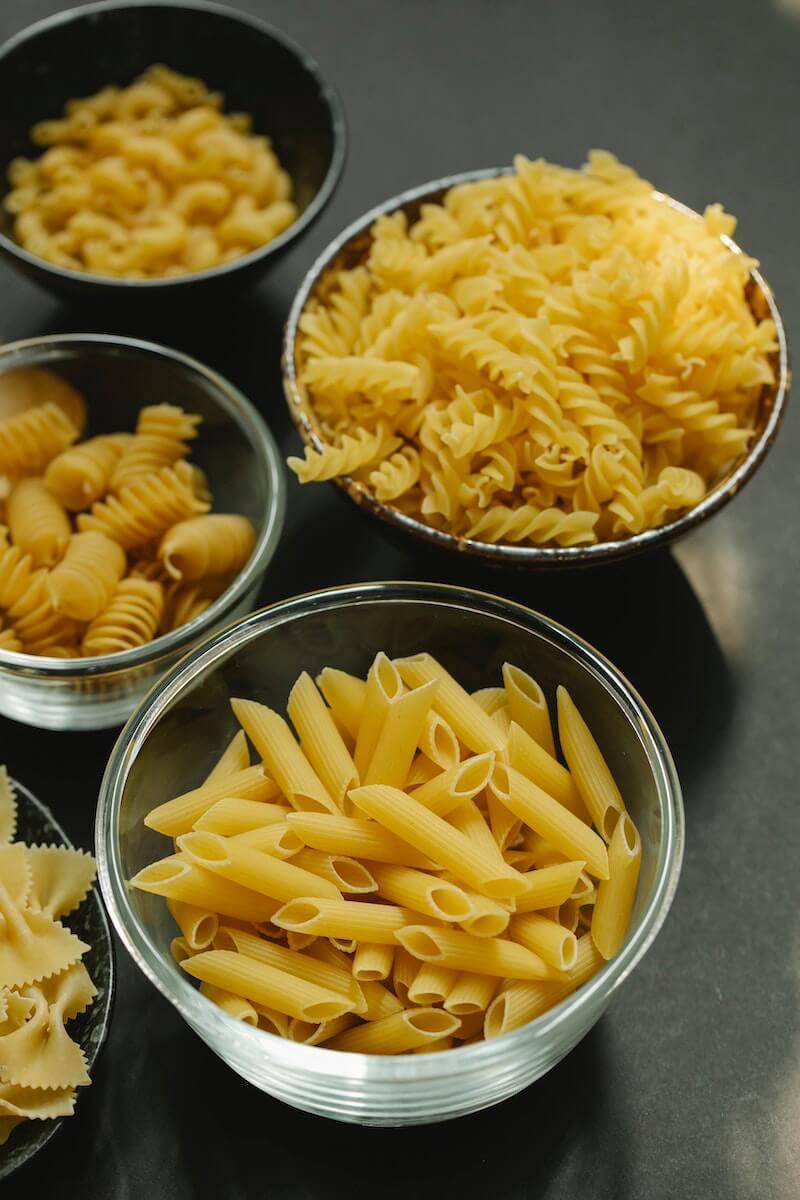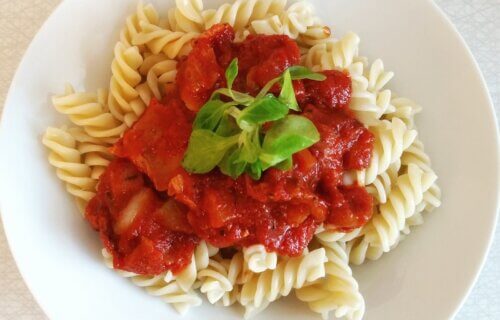All carbs get a bad rep, but pasta usually takes the brunt of the abuse. It’s almost like pasta is in its own category. Low-carb diets are very popular for weight loss these days, but that doesn’t mean that you need to cut carbs (and pasta) out of your diet.
So, why do people say pasta is unhealthy in the first place? A general serving size of white spaghetti (2 ounces) has 200 calories, around 40 grams of carbohydrates, six grams of protein, and one or two grams of fiber. If you add butters, creams, meats, and cheeses, the numbers can quickly add up and there typically isn’t a favorable balance of nutrients in the final dish. Also, lots of people eat pasta as a main dish. As such, they’re likely to eat far more than one serving size for dinner. Whole grain pasta will have a bit more fiber and protein.

Since pasta is mainly made up of carbohydrates, people view it was an “empty calorie” food. However, carbs are the preferred energy source for the body, meaning that pasta inherently provides nutrition.
It isn’t inherently unhealthy, but it can be. Virtually any food eaten in excess or as part of an overall unbalanced diet can become unhealthy fairly quickly. It comes down to balancing your plate.
A marinara-based pasta dish loaded with colorful vegetables for fiber and your favorite protein sources helps to do just that. Fiber and protein help keep you full, meaning you will feel more satisfied and be less likely to overeat compared to if you ate a pasta dish without those things. Also, pasta can be a side dish! Although it’s typically eaten as a main dish, only making pasta a small portion of your meal can help you balance things out as well.
Pasta Alternatives
Sometimes, you just want the “real” thing. That’s fine, but companies have started to come out with lots of new pastas composed of high-fiber and higher-protein alternatives to wheat. The next time you’re in the pasta aisle, maybe give one a go! Not only do the new options attract people trying to monitor their intake of white, refined carbohydrates, but people who follow a gluten-free diet may also love the selections.
Here are just a few:
- Banza has pasta noodles made of chickpeas, and even Mac and Cheese. In a two-ounce serving, the spaghetti packs: 35 grams of carbs, five grams of fiber, and 11 grams of protein.
- Barilla also makes chickpea pasta. In a two-ounce serving, the rotini provides: 34 grams of carbs, a whopping eight grams of fiber, and 13 grams of protein.
- Explore Cuisine makes edamame pasta. In a two-ounce serving, the spaghetti provides: 20 grams of carbs, 13 grams of fiber (which is gold star worthy), and 24 grams of protein.
Bottom Line
Pasta isn’t inherently unhealthy. It doesn’t deserve all of the disrespect. Pasta can be included in a healthy diet, especially if paired with protein and fiber to make it a more balanced meal that is less likely to promote large swings in blood sugar and help you feel satisfied after the meal.
Pasta also makes a great side dish, accompanied by your favorite meat, seafood, or plant proteins and veggies of choice. If you normally love pasta as part of an Alfredo dish or something that may not be that nutritious, try new recipes and get creative with flavors you know you love. This way, it’ll make eating pasta feel less daunting, if you normally feel guilty about indulging in a plate of spaghetti. If you’re ever looking to try some options with an extra boost in nutrition, there are several new varieties out there now that pack a nutritional punch.

BS!!! Protein and especially animal sources are extremely beneficial for our health. This article is clearly coming from a government agency and anyone still trusting the government is either gullible or brainwashed.
Let me guess. They didn’t monitor the carbohydrate/sugar and ultra-processed food consumption (high seed oils, unhealthy chemicals,and low nutrients) of study subjects. Association without causation.